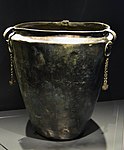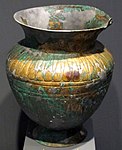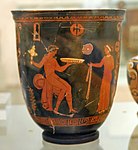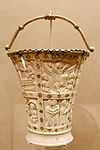Situla (çoğulu situlae) Latince kova anlamına gelen, Demir Çağı ve Orta Çağ'dan kalma kova şeklinde işlenmiş kaplara verilen isimdir. Tepelerinde genellikle bir kulp olan situlalar çoğunlukla kabartma ve frizler ile süslenmişlertir. Situlalar Etrüsk sanatının önemli bir parçasıdır.

Galeri
- Hallstatt, MÖ 800-750
- Etrüsk situlası, MÖ 700-550
- Etrüsk situlası (Situla della Pania), MÖ 7. yy
- Etrüsk situlası, gümüş, Chiusi, MÖ 650
- Etrüsk situlası, Cerveteri, MÖ 650
- Golasecca kültürü II, MÖ 7 yy.
- Vače situlası, Slovenya, MÖ 5 yy.
- Geç Etrüsk situlası, bronz, MÖ 3 yy.
- Geç Etrüsk situlası, MÖ 3 yy
- Luristan situlası, MÖ 9 yy
- Mısır situlası, MÖ 4 yy. Ptolemaios dönemi
- Antik Yunan situlası, MÖ 340-320
- Roma dönemi Venüs kabartmalı gümüş situla, MS 190-210
- Otto dönemi fildişi situla, İsa'nın hayatı kabartmaları işlenmiş, MS 860-880
- El Hamra situlası, Gırnata Emirliği, 14. yy,
Literatür
- Beckwith, John. Early Medieval Art: Carolingian, Ottonian, Romanesque, Thames & Hudson, 1964 (rev. 1969), 0-500-20019-X
- Kipfer, Barbara Ann. Encyclopedic dictionary of archaeology, Springer, 2000, 0-306-46158-7, 978-0-306-46158-3.Google books 5 Ağustos 2019 tarihinde Wayback Machine sitesinde arşivlendi.
- Lasko, Peter, Ars Sacra, 800-1200, Yale University Press, 1995 (2nd edn.) 978-0300060485
- Megaw, Ruth and Vincent, Celtic Art: From Its Beginnings to the Book of Kells, 1989 (2001 2nd edn), Thames & Hudson
- Sandars, Nancy K., Prehistoric Art in Europe, Penguin (Pelican, now Yale, History of Art), 1968 (nb 1st edn.)
- Witt, Reginald Eldred. Isis in the ancient world, JHU Press, 1997 (2nd ed), 0-8018-5642-6, 978-0-8018-5642-6. Google books 1 Mart 2020 tarihinde Wayback Machine sitesinde arşivlendi.
- Beckwith, John. The Basilewsky Situla, 1963, HMSO
- Kastelic, Joze, and Karl Kromer, Guido Mansuelli. Situla Art: Ceremonial Bronzes of Ancient Europe, NY McGraw-Hill 1965
Wikiwand in your browser!
Seamless Wikipedia browsing. On steroids.
Every time you click a link to Wikipedia, Wiktionary or Wikiquote in your browser's search results, it will show the modern Wikiwand interface.
Wikiwand extension is a five stars, simple, with minimum permission required to keep your browsing private, safe and transparent.















